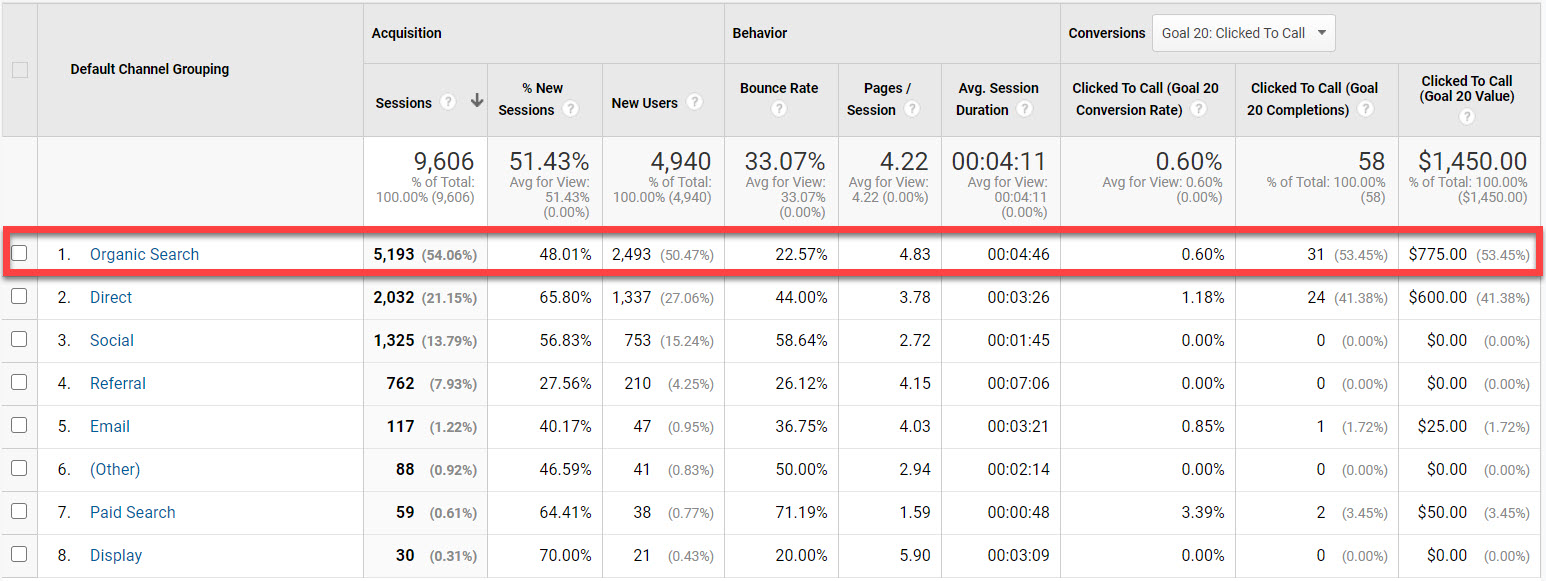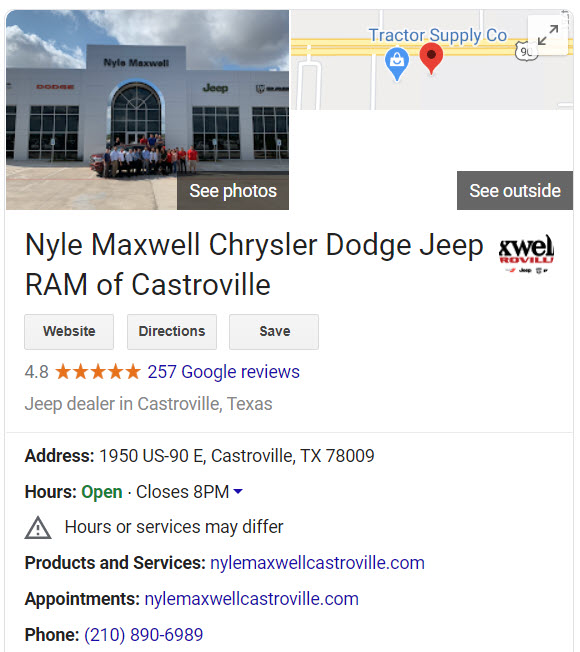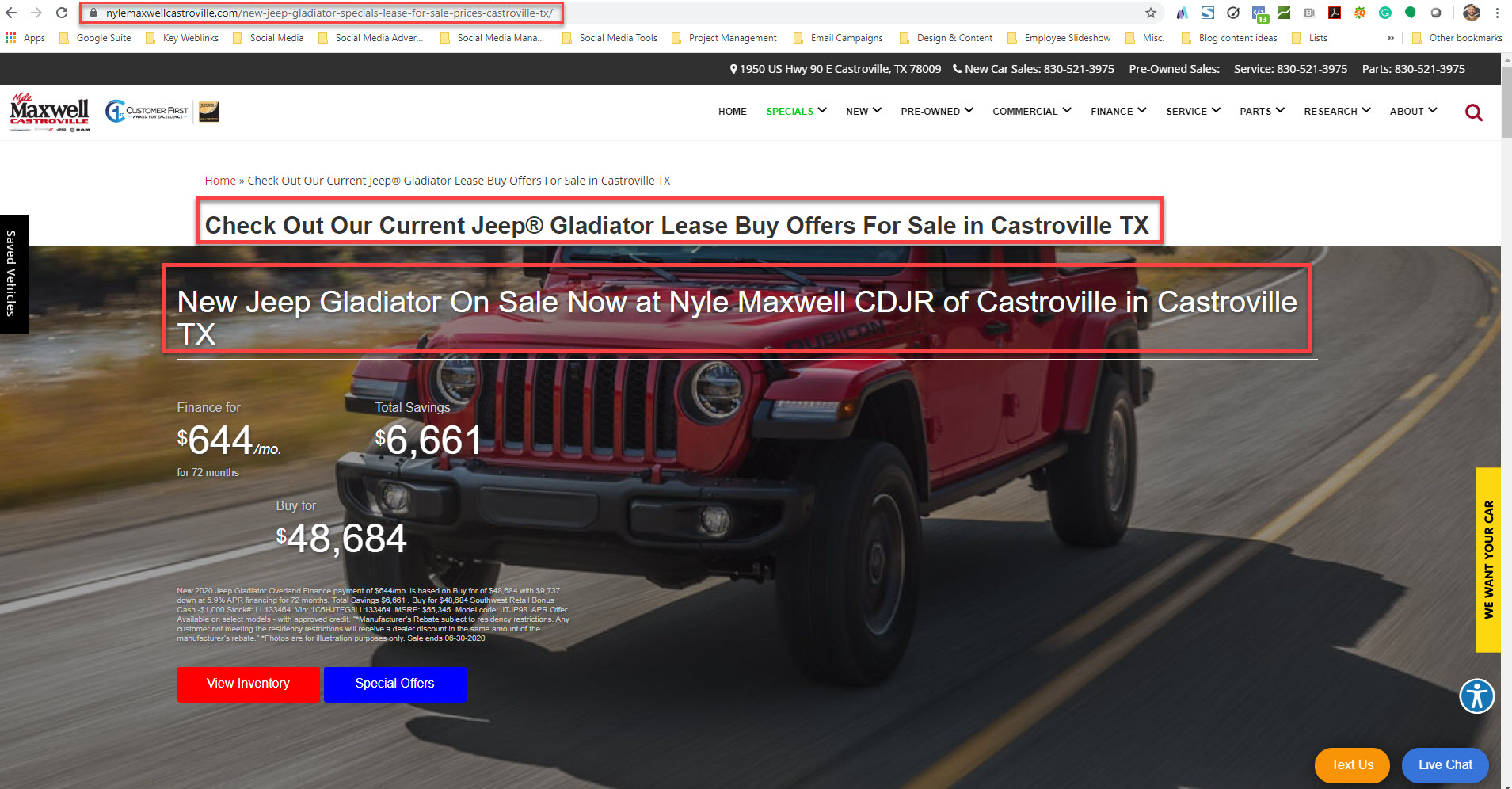Automotive SEO 101: What Dealerships Need to Know
Building your foundational automotive SEO knowledge can help your dealership build a successful competitive advantage. Over 90% of automotive shoppers research for vehicles online before they buy. Effective SEO can increase the chance of vehicle shoppers finding your dealership on page one of the search engine results page (SERP).
I'm going to help you understand what SEO is, how it works and how it can benefit your dealership.
What is automotive SEO?
SEO stands for search engine optimization. Automotive SEO is the process of improving how your dealership’s website shows up in the SERP.
Doing this properly helps increase the visibility of a dealership’s website or website pages in SERPs which improves the quality and volume of organic (free) website traffic from interested shoppers.
How does automotive SEO work?
Search engine basics
To understand how automotive SEO works, it’s important to first understand the basics of search engines.
Search engines (like Google and Bing) are efficient answering tools. People use search engines to solve their problems and get answers to their questions.
Search engines have two jobs:
- Organize content on the Internet
- Show relevant content to people when they search the Internet
Search engines quickly scan huge amounts of content from all over the internet. They do this by using thousands of factors to find and deliver relevant content that will most likely answer people’s search queries.
This is accomplished by organizing all of the Internet’s content. Then, the content is ranked by how well it matches a search phrase.
Organic vs. paid search results
There are two different types of search results. Organic and paid.
Organic search results are unpaid, or free, results. These results are earned by doing proper automotive SEO activities and efforts. There are usually up to 10 organic listings per page.
Paid results are advertisements that show up in the search results. Advertisers pay for these placements that can appear above and below the organic results. The maximum that will appear is eight. Four above and four below the organic links.

In the search result example above, the search phrase: “Ram 1500 lease” is used. Jeff Belzer’s is seen in the first paid search spot. Jeff Belzer’s also happens to show up in position zero. The number one organic search result is then listed below position zero.
Position zero is the first Google search result that appears above the organic SEO listings. This prominent spot is the most coveted organic real estate on the SERP because of its visibility.
Position zero is also considered a featured snippet. Google introduced additional search result features designed to highlight preferred, or highly-relevant content. Other examples of these search results include knowledge panels, People Also Ask section, image and video carousels and related search phrases.
Google automatically generates featured snippets. About 24 percent of search results appear as a featured snippet.
Position zero is important to dealerships because the result is more eye-catching and occupies more real estate higher up on the page. However, research shows that these results actually result in lower clicks because they tend to answer the searchers’ query without requiring a click.
Featured snippets that include current automotive dealership offers may challenge this trend. This organic result may entice the shopper to click on the result to learn more about the offer. Search results that answer the shoppers’ question may drive more clicks.
What are the different types of automotive SEO?
Local SEO vs. national SEO
Two types of automotive SEO exist: local and national. Local SEO focuses on improving your dealership’s website visibility in a search engine’s local results. Local SEO targets local automotive shoppers in a specific geographic area. Dealers should focus on reaching local car buyers who are near the dealership.
Local search terms also help determine specific intent. Nearly 50% of searches are for local results.
Conversely, national SEO focuses on ranking your dealership’s website content for general terms with broad intent. Examples may include search terms such as “How to change a flat tire” or “Compare Ford Explorer vs Chevy Tahoe.”
National SEO efforts typically aren’t as useful for most dealerships. This is because most ready-to-buy automotive customers prefer to shop locally. Shoppers want to be within reasonable driving distance of a dealership when buying a vehicle or taking it in for service.
National SEO strategies also tend to be more costly. Broad, highly searched for terms are in greater demand, more competitive and are more difficult to rank on the first page.
Instead, dealerships should focus on using a local SEO strategy. It’s better to target interested automotive shoppers within a calculated geographical radius as these customers are more likely to actually purchase a vehicle or service from a local dealership.
White hat SEO vs. black hat SEO?
White hat SEO are SEO tactics that are considered ethical and follow search engine guidelines. These are considered acceptable, best-practices that don’t try to trick the search engines.
White hat SEO involves creating valuable content for automotive shoppers. This content aims to educate and inform the customer. Dealerships can build customer trust and loyalty, by creating valuable, high-quality content for automotive shoppers. This content can improve the visibility of website pages in the search results.
Black hat SEO is the opposite. This type of SEO involves tactics designed to cheat the system by not following search engine guidelines. Valuable content for the customer is not prioritized.
Black hat SEO tactics aren’t illegal, but they deliberately go against search engine recommended guidelines and carry risk. Dealerships or agencies that use black hat SEO tactics risk a penalty or manual action to their websites.
Google will take manual action when a Google user submits a spam report and when a website violates the Webmaster Quality Guidelines. See the Webmaster Quality Guidelines for a full list of items that may warrant a manual penalty.
If your content is created with the intent to mislead the user or trick the search engines, then your dealership or agency is most likely engaging in unethical practices. Google wants your dealership’s content to display expertise and be authoritative and trustworthy. Google refers to this as EAT, which stands for Expertise, Authoritativeness and Trustworthiness. Follow these three content principles and your dealership will avoid manual action issues.
Should a manual action occur, a dealership could lose out on valuable sales opportunities by not having its website found on the SERPs. This is why it’s always safer to follow search engine guidelines.
Dealer Teamwork practices white hat SEO to protect its clients from unnecessary risk and to develop high-quality content for automotive shoppers to drive more website clicks, phone calls and store visits. Learn more about Dealer Teamwork’s automotive SEO.
Why is automotive SEO important?
There are seven main reasons why automotive SEO is important for dealerships.
1. Organic search is often the primary source of website traffic
The first reason why automotive SEO is important is that the majority of online website traffic comes from organic search results. Over half of all traffic comes from organic search.

Organic search is the highest source of website traffic in this dealership’s Google Analytics account.
Paid advertising, social media and other online platforms generate website traffic too, but it’s less than what’s driven from search engines. This is underscored by the fact that only 2.8 percent of all U.S. searches result in clicks on paid advertise....
Further, SEO has 20 times more traffic opportunity than paid search on mobil... — illustrating the power effective and properly handled automotive SEO strategies can have for a dealership.
2. Automotive SEO influences shopping behavior
Automotive shoppers research online before buying a vehicle or bringing their vehicle in for service.
Good automotive SEO tactics help influence shopping behavior by increasing the visibility of dealerships’ specials/offers, products and services and unique selling points.
If automotive shoppers can’t find your dealership, they’re not going to buy from you. Automotive SEO helps solve this problem by helping your dealership communicate key messaging to more interested shoppers in the search results.
Dealerships can build a competitive advantage and steal customers away from competitors by increasing their visibility on SERPs and providing shoppers information when they need it. According to Google, one in three smartphone users have purchased from a company or bran... because that company answered that person’s question when they needed it.
Automotive SEO can help dealerships “be there” for shoppers — increasing the chance that web page content is visible on the SERPs to improve the chance of automotive shoppers buying from your dealership.
3. Local SEO drives more calls, website clicks & direction requests
Good local SEO can drive more calls, clicks to your website and direction requests. One critical component to local SEO is a dealership’s Google My Business (GMB) listing. Your GMB listing acts as a free and easy-to-use local landing page that helps your dealership stand out to local in-market shoppers.

GMB listings can help dealerships increase calls, website clicks, direction requests, appointments and more.
Automotive shoppers are increasingly using GMB to research and search for vehicles and dealerships. According to a BrightLocal study, between Q4 2017 and Q4 2018, direct searches for a business name or address in Google search or Google Maps grew by 38 percent.
Website clicks from GMB listings also increased by 29 percent during that same time period. This means that automotive shoppers are using GMB more often and are visiting your website after viewing GMB content.
Dealerships see a monthly average of 167 phone calls, 576 website clicks and 145 dire....
These statistics are significant because it means in-market shoppers are actively using your GMB listing to research and reach out to you when they’re ready to buy.
For a deeper dive into local SEO, check out our blog article: How Local SEO & Google My Business Can Benefit Your Dealership.
4. Automotive SEO is a cost-effective long-term strategy
A long-term benefit of automotive SEO for dealerships is its ability to pay dividends over time. For example, when a well-optimized landing page ranks organically, a dealership has the ability to attract quality traffic without paying for each click.
Organic search traffic delivers more high-quality traffic. This traffic historically drives more clicks, higher engagement and better conversion rates.
Automotive SEO services don’t require the same large budgets that paid search campaigns need. When done right, good SEO efforts have a long-lasting impact that justifies the cost while reducing wasted ad spend.
5. Automotive SEO helps dealerships win the click battle
If your dealership isn’t on page one of the search results, you aren’t winning the click battle. That’s because less than one percent of Google searchers click on a search result on page two of the search results.
The number one spot is important because nearly 32 percent of searchers click on that result. The combined top 3 spots in the search results account for a whopping 75 percent of clicks.
If your dealership isn’t in one of the top 3 spots, your chance of being clicked on by shoppers is dramatically reduced.
Proper automotive SEO tactics can help you move up the search result rankings and achieve the coveted number one spot.
6. Automotive SEO creates a better user experience
Dealerships often struggle with ranking high in search results and acquiring maximum visibility to relevant shoppers. Automotive SEO can solve both problems by helping dealerships create a better user experience.
It’s important for dealerships to provide a positive user experience because customers know what they want. If they struggle to find that content, they’re likely going to turn somewhere else. That could be your competitor.
Google and other search engines are excellent at providing users with the answers they seek. This puts pressure on dealerships to provide a strong user experience in order to rank highly.
Quality automotive SEO that leverages a positive user experience through high quality, relevant content, can help build customer trust, loyalty and ultimately higher search result rankings.
7. Automotive SEO establishes authority in search engines
Dealerships’ ultimate automotive SEO goal is to provide an effective user experience that is easily discoverable in search results. Websites that provide this experience establish consumer trust and credibility and eventually authority in the search engines.
Numerous factors go into establishing a brand’s authority. Those include:
- Quality backlink profiles
- Positive user experience and behavior
- Machine-learning signals
- Optimized on-page elements and content

Optimized on-page elements (highlighted in red) help establish page authority, which can lead to higher search result rankings.
Building authority relies on offering a quality product that customers want and trust. But that takes time, patience, effort and commitment on the part of the dealership.
Dealerships that effectively utilize automotive SEO can establish their authority. By doing so, dealerships will see long-term dividends in the form of high search rankings and more opportunities for sales in-store and online.
© 2025 Created by DealerELITE.
Powered by
![]()

You need to be a member of DealerELITE.net to add comments!
Join DealerELITE.net